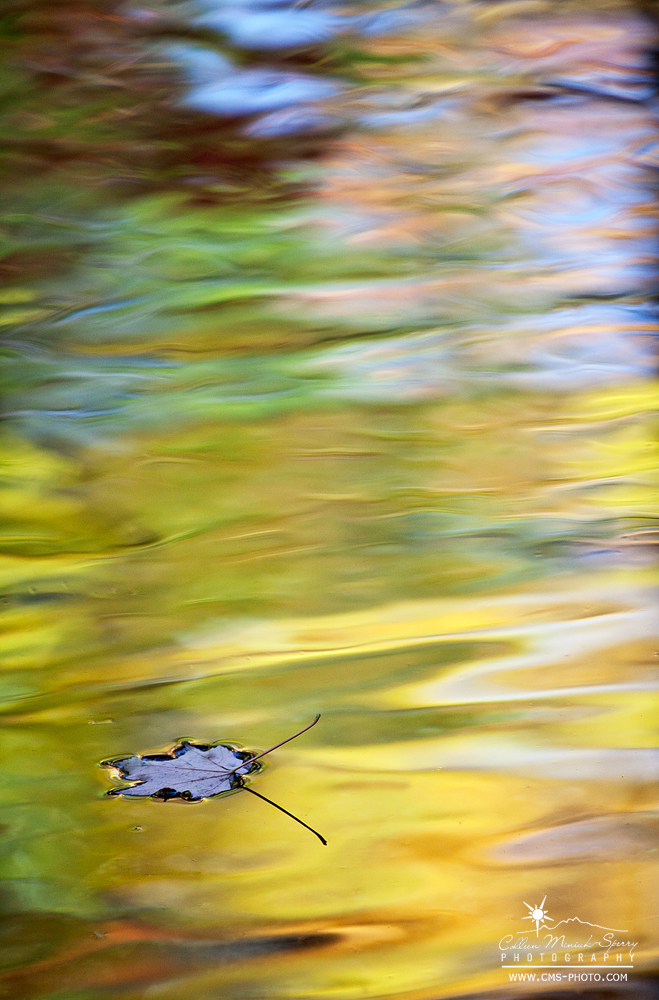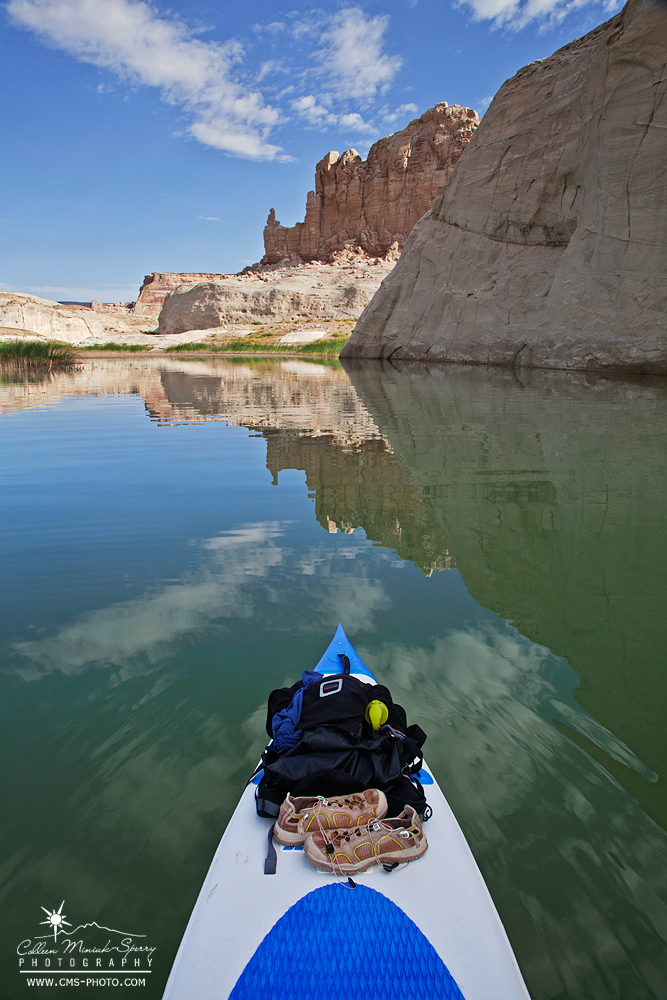
View of the sandstone cliffs near Lone Rock at Lake Powell from my stand-up paddleboard (SUP) this past August. I plan to SUP the ~150-mile length of Lake Powell this November.
Occasionally I get these harebrained ideas. Past notions range from wanting to climb Mount Everest in my 20’s (until I learned I really, really, really dislike hiking uphill) to making a pact after college with my talented and athletic friend, Jen, to train to try to make the Olympics in rowing crew (a sport I had never done, but she had – and well – at the Varsity level at Stanford University).
Some pass with a hearty laugh and no further mention; some of the perhaps less ambitious ones happen…like standing in 80 mph winds just to see what a blizzard feels like in Maine or leaving at midnight to drive two hours to photograph star trails along the coast through the night. Certainly not Mount Everest or the Olympics, but still fun and exciting nonetheless.
I cannot say how my latest silly idea came to be, but this time, it’s actually going to come to fruition. And soon too! Starting in late November, I plan to traverse the length of Lake Powell, following the course of the Colorado River about 150 miles from Hite to Wahweap Marina on my stand-up paddleboard (SUP).
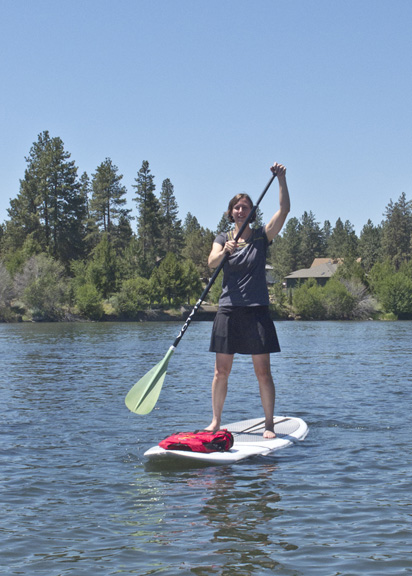
My first time SUPing in June 2013 on the Deschutes River in Bend.
Originally, I intended to do the float alone, but when I shared my plans with my parents, my Mom (whom we call the “Energizer Bunny”) immediately proclaimed, “I’m coming with you!” So my 64-year old mother, Jacque, will act as my support crew, paddling with me in a double kayak with much of our gear for the two-week adventure.
Although I came up with the idea last fall, I became hooked on “SUPing” in Oregon during June 2013, when our dear friend from college Chris, his lovely wife Susan, and young son visited Bend. At that time, my husband and I had temporarily moved to Hillsboro, Oregon – a mere three-hour drive to Bend – for Craig’s job. Looking for an afternoon outing, the five of us ventured to the Deschutes River and rented two paddleboards. To make sure someone always had an eye on Chris and Susan’s little one, each couple paddled for about 15-20 minutes, and then came back ashore to switch.
From the first moment my shaky legs stood on that wobbly board, I was in heaven. Besides the rhythmic pace mesmerizing me in to a blissful and tranquil state, I became absorbed into the landscape. I felt as if I became an active participant in my surroundings, not just an observer of it. After that exhilarating afternoon, I could not wait to paddle again!

“What’s SUP, Mom?” || My mom, Jacque, paddles on a stand-up paddleboard for the first time in August 2014 in Frenchman Bay near Bar Harbor, Maine.
Since then, I have taken a few lessons from some incredibly capable SUP’ers. Each experience only encouraged and inspired me to want more. After a memorable outing with my Mom on Frenchman Bay near Acadia National Park in Maine in August 2014, I started noodling on the idea of a grand touring adventure on a paddleboard “somewhere.” I tinkered with the idea of paddling the length of a U.S. coastline like Oregon, Maine, or even Florida. After a significant amount of research though, I decided I was not quite ready for my aquatic escapades to potentially involve sharks or alligators (at least for now…although I’m quite entranced by the 325-mile Maine Island Trail I just heard about…maybe that will be my next absurd idea…). With no scary creatures hiding within its waters (I think…right?!?), the idea of floating down Lake Powell emerged to the top of my list of crazy ideas that likely would never materialize.
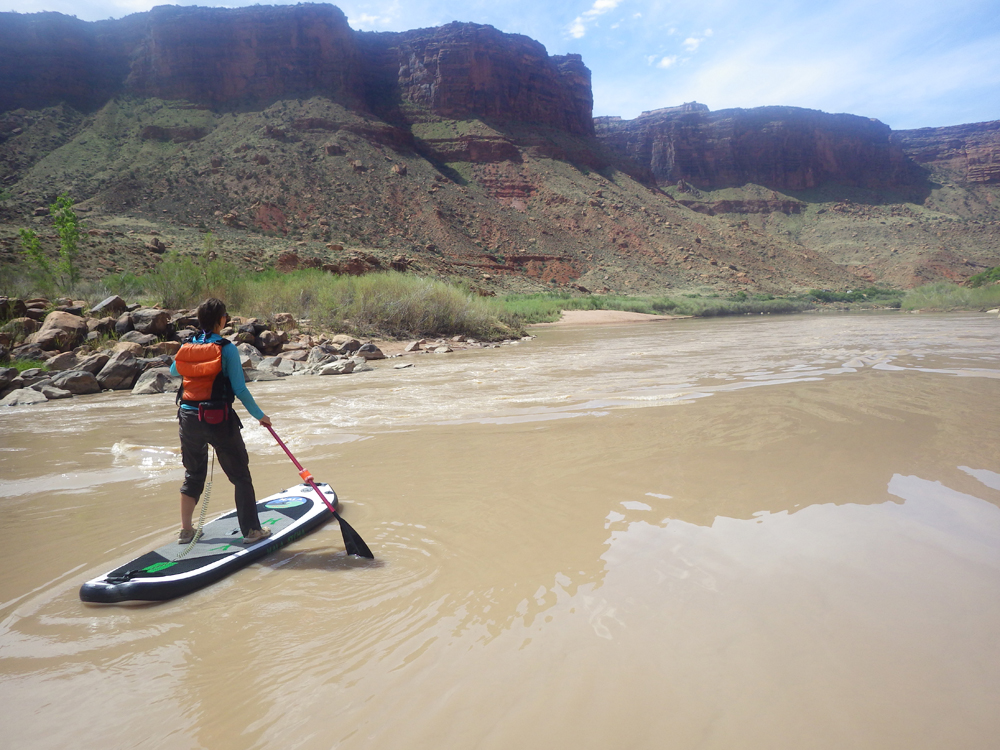
Learning to paddle river rapids on the Colorado River near Moab, Utah on my 40th birthday (photo courtesy of my amazing guide, Alicia Wright)
Then I spent the morning my big 40th birthday this past April paddling the upper Colorado River outside Moab, Utah, where, among other things, I learned how to paddle on river rapids. And how to get dunked in them. And live to tell about it (I’m deathly afraid of water where I cannot see my feet. Ironic, huh?). And how to keep keeping my paddle “all in” both literally in the water and figuratively in life.
Invigorated by the moving outing, I pondered later that afternoon over a piece of delicious birthday cake, “Life’s short. Why not SUP the length of Lake Powell?” Blame the sugar high, but I could not come up with any reasons not to…well, except for one: I didn’t own a board!
Fortunately, my husband gifted me an inflatable SUP for my most recent birthday. After spending much time gliding in lakes around Phoenix and in other lakes around the western U.S. with it, I decided to name my board “Liridon” (which means “free spirit” in Albanian) ahead of its epic journey at Lake Powell. I call it “Lyr” for short, which means “god of the sea” in Welsh (and also in Irish if spelled “Lir”).
As I became more serious about pursing the trip, I checked my calendar and found the only window of time large enough to accommodate such an outing within the next year fell in this November and December. Although many have and will disagree with me, I felt like that was an ideal time to complete our adventure. It offered the prospects of the cooler temperatures (compared to scorching summer weather), a reduced chance of brutal winds (as seen in the spring), and fewer boats on the lake than most other months (so we would have the lake to ourselves). I mean, really, where do I sign up??!
This past August, I introduced Lyr to Lake Powell on a quick day-long trial run. Under a clear blue sky, I set out at first light to paddle for about six to eight hours where I hoped to cover about 12-16 miles. In the methodical pace of paddling in the warm, welcoming waters around the bay at Lone Rock, I reviewed many details about my November trip. Would I survive paddling in 50 or 60-degree temperatures, 30 degrees cooler than this summer day? Yes, but I should buy neoprene booties just in case. Will I be OK paddling like this, non-stop, for two weeks? An emphatic yes.
Outside of solvable logistical challenges, the biggest question that crossed my mind, though, was how would the 14 days I had planned ever be enough? With all the side canyons and inlets and hidden coves to explore, how will I ever be able to stay focused long enough in the main channel to actually make it home?
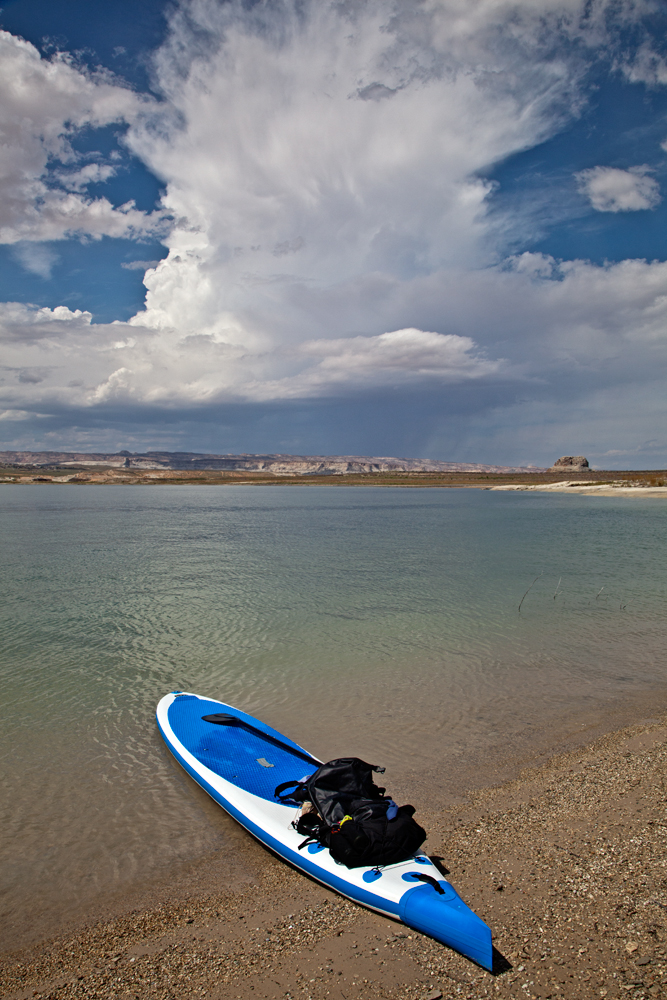
The first squall as seen from a sandy beach along Wahweap Bay. Thunder boomed from this storm about 20 minutes later.
Growing cumulonimbus clouds to the southwest pulled me out of my planning trance. The forecast called for a monsoon storm to blow through later in the afternoon. A sizeable squall was moving in early – and fast. I found myself about two to three miles out – and on the opposite side of the lake – when I heard thunder around 11 a. m.
I paddled to the nearest rocky beach, pulled my SUP out of the water, and waited to see what would transpire. As the winds swirled and the angry sky unleashed its fury, I tucked under my beached board to keep as much of me as dry as possible, curled up so that my back and head took the brunt of the hit. Stupidly, I had left my rain jacket and pants at my camp, thinking it was too warm and clear to need such things.
Then, I spotted lightning too close for comfort. Leaving the cover of my board, I found the lowest point I could find and away from the bushes (there were no trees in sight). I then immediately assumed the lightning position – even though it meant getting drenched. I spent the next 45 minutes squatting on balls of feet standing on top of my life vest. In hindsight, I should have tossed my metal paddle at least 50-100 feet away from me. Thankfully, my oversight did not cause a disaster.
The storm passed, but left in its wake a strong headwind causing one- to two-foot white-capped swells. I sure did not want to paddle in the high winds, but I could see two more squalls on the horizon moving quickly towards me. I needed to make the crossing to the other shore and the last couple of miles back to camp NOW, or I was going to end up sleeping on this shore.
I paddled sitting down, and mostly with my left arm to battle the relentless wind gusts and swells. I kept repeating, “What doesn’t kill you makes you stronger.” After a few iterations, I added, “And if it does kill you, well, you’ve just been dumb.”
While questioning my own intelligence, I paddled ashore the sandy beach beneath my camp site in time to clean, dry, and put away my SUP (about a 20 minute process) before the next thunderstorm arrived overhead. From the time I reached shore around 1:30 pm until the next morning, squall after squall (I counted eight in the waking hours) passed through the area with high enough winds to flatten my neighbor’s tent.
After my first trial run this summer at Lake Powell with Lyr, I was not only happy to be alive. I was happy to feel alive! And the outing only made me want my November trip to come sooner.
On a two-week tour, though, I know some challenging times will occur among the many memorable highlights, so I would like your help! Tell me, what is your absolute most favorite inspirational song?
Please leave a comment below or shoot me an email with your suggestion. I am putting together a new big playlist on my iPhone with whatever type of music you wish to offer – country, rock, indie, pop, and anything in between – so I can bring all the wonderfully positive vibes from my friends – YOU! – with me on my trip to listen to when I need a little pick-me-up.
In case you too would like to jam out to the inspiration of others, the AMAZING list of contributed songs has been posted on my blog at “The Lake Powell Paddle Playlist” at youcansleepwhenyouredead.com/wordpress/the-lake-powell-paddle-playlist. You never know, you might need it during your own crazy ideas…I can’t wait to hear what you come up with!


